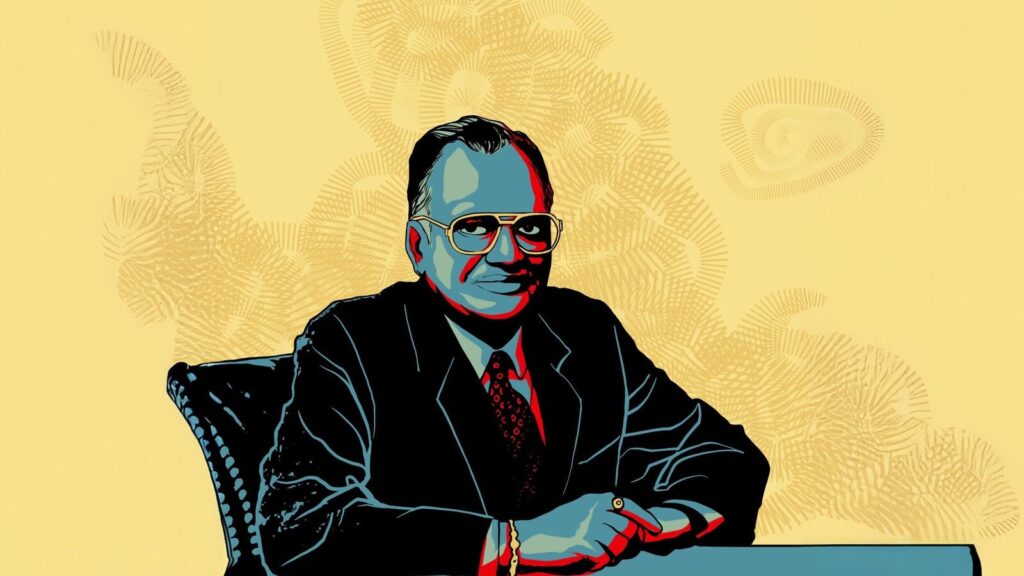In the pantheon of India’s industrial titans, few stories capture the imagination as that of Om Prakash Jindal. From a humble bucket-manufacturing workshop in Hisar to building one of India’s largest steel empires, his story reads like a masterclass in entrepreneurial audacity. What truly set him apart was the rare ability to seamlessly navigate both the unforgiving world of heavy industry and the intricate maze of politics.
The industrialist’s apprenticeship
Long before he became known as the patriarch of the Jindal group, he was a young man with an obsession for understanding how things worked. In the 1950s, when most of his contemporaries were seeking steady government employment, he took the unconventional path by learning about pipe bending and welding as a trader of steel pipes and tubes. This hands-on experience meant that he was never just another businessman giving orders from his air-conditioned office – he understood the nuts and bolts of his business.
Born into a modest family in 1930 in a hamlet in Nalwa, Haryana, Jindal’s journey was anything but conventional. Packed off to Kolkata (then Calcutta) as a young boy, he learnt the basics of wholesale and retail textile trading. Soon, though, he realised that steel was the backbone of a nation, and with that began his vision for a business that would, by the time of his tragic death in a helicopter clash in 2005, have an annual turnover exceeding $4 billion and operations spanning several continents.
Also read: A 53-year-old Harvard article holds clues to India’s business family feuds
Kolkata was his karam bhoomi. It is here that he started out as a metals trader, though he went on to set up his first plant in Liluah, a neighborhood in Howrah. Barely in his 20s, he followed this up with another plant in the city as part of his newly established company Jindal India Ltd. He subsequently established Jindal Steel and Power, JSW Group and Jindal Stainless Limited.
The genesis of the group’s subsequent expansion and success was his masterful grasp of vertical integration and his stress on innovation. By controlling the sources of raw materials such as iron ore and coal through mining ventures, he ensured a stable supply chain for his steel production. Establishing power plants ensured his steel business always had a steady source of electricity. This holistic approach insulated his industries against external shocks and allowed for better control of the value chain.
In the late 1960s, when India’s steel sector was dominated by giants such as Steel Authority of India Ltd (SAIL) and Tata Iron and Steel Company (TISCO), he had the prescience to move into steel pipes. In 1983 he set up India’s first private sector cold rolling mill in Thane. It was a smart move, given India’s heavy import dependence on special steel products.
This ability to think out of the box also gave him access to badly needed capital. During the pre-liberalisation era, when domestic funding was scarce, he leveraged export earnings to fund expansion, built strong banking relationships, used supplier credits innovatively, and created joint ventures for technology and markets.
Without the privileges of a formal education, he relied on an intuitive understanding of business and an uncanny ability to spot opportunities. The boy who wanted to become a wrestler eventually became an industry titan. His journey from combative to complementary saw him learn and teach the value of collaboration – a hallmark of all successful endeavours.
Politician with a spine of steel
What truly set him apart, however, was his unique position in politics. Unlike many businessmen and politicians who used their positions to advance their own business interests, he approached politics with the same straightforward approach that characterised his business dealings. As an MLA and later power minister in Haryana, he was known to speak his mind even when it did not align with his party’s position. His political style, bereft of grandiose promises or rhetorical speeches, was a refreshing departure from the usual politicians’ spiel.
Also read: Jamnalal Bajaj and the alchemy of business philanthropy
Instead, he brought to politics his businessman’s pragmatism. Not surprisingly, his constituency Hisar benefited from improved infrastructure and industrial growth during his tenure. After his death in 2005, his second wife Savitri took over his political mantle, a tradition that has continued with his son Naveen Jindal.
A rare successful succession
Before he passed away, he put in place a succession plan which ensured that, when the group carried out a formal family division in 2009, the process was smooth and without acrimony. On his death, Prithviraj inherited the steel pipes business, Sajjan the carbon steel business, and Naveen the power business, while the stainless steel business went to Ratan Jindal. The family subsequently sorted out the complex cross-holding structure, simplifying it such that the four sons and their mother Savitri Devi received 20% of the promoters’ stake in the five holding companies that were created.
Om Prakash Jindal’s rise from modest beginnings in a small Indian town to forging a vast industrial empire is a reminder that even in the face of immense challenges, the spirit of innovation and the courage to dream big can lead to extraordinary achievements.
Also read: Gopal Vittal and Neville Noronha leave behind key lessons in partnership
Source:https://www.livemint.com/companies/people/op-jindal-om-prakash-jindal-op-jindal-profile-jindal-group-jindal-steel-and-power-naveen-jindal-sajjan-jindal-11737718705453.html

